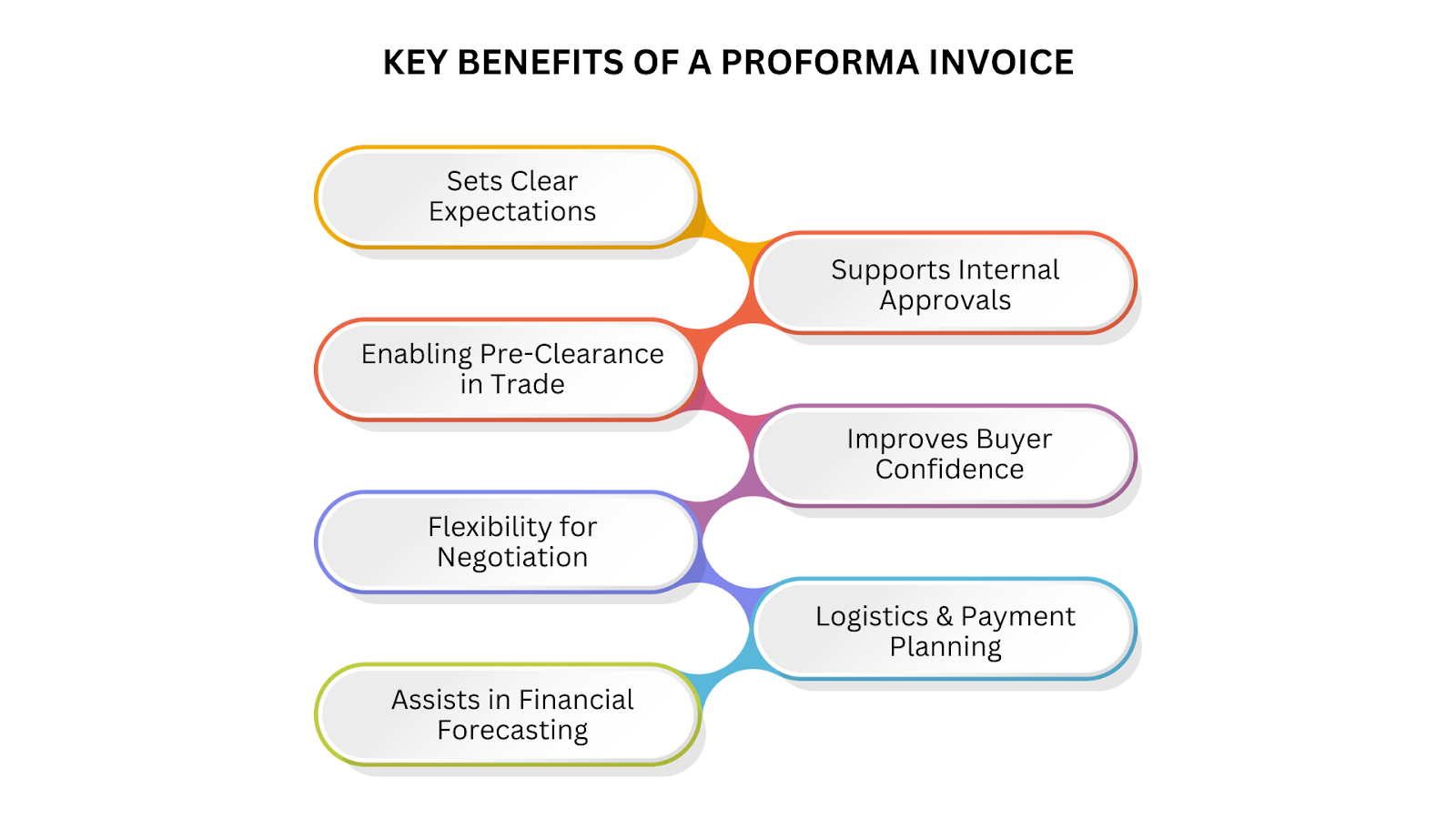
A proforma invoice is a crucial document used early in the sales process to outline the details of a proposed transaction. It gives the buyer a clear picture of the products or services, estimated costs, and payment terms before a formal invoice is issued. Unlike a standard invoice, a proforma invoice is not used for accounting or final billing purposes. Instead, it serves as a professional quote that can support approvals, negotiations, or shipping arrangements.
This guide covers the purpose, structure, and typical use cases of proforma invoices, complete with examples and tips for creating one effectively. If you’re looking to present accurate estimates and improve communication before closing a sale, understanding how to use a proforma invoice correctly is essential.
A proforma invoice is a preliminary sales document issued to a buyer before the final sale is confirmed. It details what is being sold, including product specifications, quantities, pricing, tax, shipping terms, and other relevant information. Though it resembles a commercial invoice in format, it holds no legal weight for payment or accounting records.
This document is particularly useful in trade and service-based businesses where approval is needed before billing. Once accepted by the buyer, it acts as a commitment from the seller to provide the goods or services under defined terms.
Also Read: The Benefits of Implementing E-Invoicing software for Businesses in Saudi Arabia
Now that the definition is clear, it’s important to understand the practical value a proforma invoice brings to both buyers and sellers in shaping transparent transactions.
A proforma invoice helps clarify the scope and cost of a transaction before either party makes a commitment. It’s often used during the quote or negotiation stage, giving the buyer enough information to secure internal approvals or funding. In international trade, it may be required to initiate import procedures or apply for a letter of credit.

A proforma invoice offers several advantages that help both buyers and sellers establish clear communication and build trust before a sale is confirmed:
It reduces ambiguity and improves coordination between departments, especially when transactions involve multiple steps or third-party services.
Tired of manual data entry and compliance headaches? With HAL ERP, every proforma invoice is automatically aligned with Saudi Arabia’s ZATCA e-invoicing and VAT standards. Get started today and let automation handle the details.
To fully benefit from this document, it must include specific and consistent details. The next section outlines what should be included to ensure clarity and alignment between parties.
Also Read: Bringing Order to the Chaos of Expense Management With HAL ERP
A professional proforma invoice should present all essential transaction details clearly and accurately. It should look similar to a commercial invoice, but it must be clearly labeled as “Proforma Invoice” to avoid confusion. Here is a list of important elements to keep in mind when making a proforma invoice:
Clear documentation reduces back-and-forth and helps buyers make faster decisions.
A clear layout helps avoid confusion, but it’s equally important to understand how a proforma invoice differs from a commercial invoice, especially when documentation is used across departments or borders.
Both documents share a similar format but serve distinct purposes. A proforma invoice is an estimate or draft, while a commercial invoice is the final billing document used for payment and accounting.
With the differences clarified, the next step is knowing when it’s appropriate to use a proforma invoice in your sales or procurement cycle.
A proforma invoice is most useful during early-stage discussions. It helps formalize the offer without initiating billing. Buyers may use it to request internal approvals, verify costs, or plan logistics before committing to a purchase.
The following are the Common Situations Where Proforma Invoices Are Used:
This document acts as a decision-making tool and prepares both parties for the next steps.
Also Read: Why Is Procurement Management Software Essential for Business Growth?
Seeing these use cases in context can bring the concept to life. The following example shows how a proforma invoice is typically formatted and presented.
Here’s a sample of what a well-structured proforma invoice might look like for a local transaction:
Proforma Invoice
Invoice No.: PI-2034
Date: 01-Aug-2025
Valid Until: 15-Aug-2025
Seller:
XYZ Solutions
Riyadh, Saudi Arabia
VAT No.: 3124567XXX
Buyer:
ABC Retail
Jeddah, Saudi Arabia
Terms: Payment due within 15 days. Delivery within 5 business days after payment confirmation.
Now that you've seen what a completed proforma invoice looks like, let’s look at how to create one and what to keep in mind to avoid common oversights.
Creating a proforma invoice is straightforward with basic tools or business software. You can use spreadsheets, invoicing platforms, or ERP systems to generate accurate documents quickly. Here are some of the Best Practices for Creating Proforma Invoices:
While manual tools can get the job done, they often lead to errors, delays, and compliance risks as businesses grow. As transaction volumes increase, the likelihood of mistakes and missed deadlines rises. HAL ERP helps eliminate these challenges by offering a more reliable and accurate solution for businesses scaling up.
Also Read: ZATCA E-Invoicing in Saudi Arabia: How to Keep Your Business Ready
Accurate documentation is critical in every sales cycle, especially when transactions depend on approvals, pricing accuracy, or compliance. HAL ERP helps businesses manage proforma invoices and financial data through a fully integrated platform designed for smarter operations.
Many businesses across Saudi Arabia have experienced significant improvements with HAL ERP. Here’s what one of them has to say:
"Once we transitioned to HAL ERP, the simplicity and user friendliness helped our employees be more productive and make sure they were able to do all necessary changes on their own."
Jameel Ahmed
Finance Manager, Pan Gulf Optics
With feedback like this, it's clear that HAL ERP helps streamline business operations. Now, let's dive into the key features that support efficient invoice management:

HAL ERP’s tools are built to support efficiency, improve accuracy, and help teams move faster with better information. It’s the ideal platform for companies looking to improve financial processes and remove bottlenecks from sales documentation workflows. With these success stories, discover how organizations across Saudi Arabia are using HAL ERP to strengthen financial operations and make more confident, data-driven decisions.
A proforma invoice is a valuable tool in sales, procurement, and trade. It sets the foundation for clear communication by providing the buyer with a detailed, formal quote before finalizing a deal. While it doesn’t replace a commercial invoice, it serves as a reference that supports decision-making, budget planning, and approval workflows.
For businesses aiming to improve transaction accuracy and reduce friction in the sales cycle, using proforma invoices is a smart practice. When combined with tools like HAL ERP, the process becomes faster, more reliable, and easier to manage across teams and departments.
Want to simplify how you handle quotations and invoicing? Book a free demo of HAL ERP today and see how it can support your business with accurate, professional proforma invoices.

